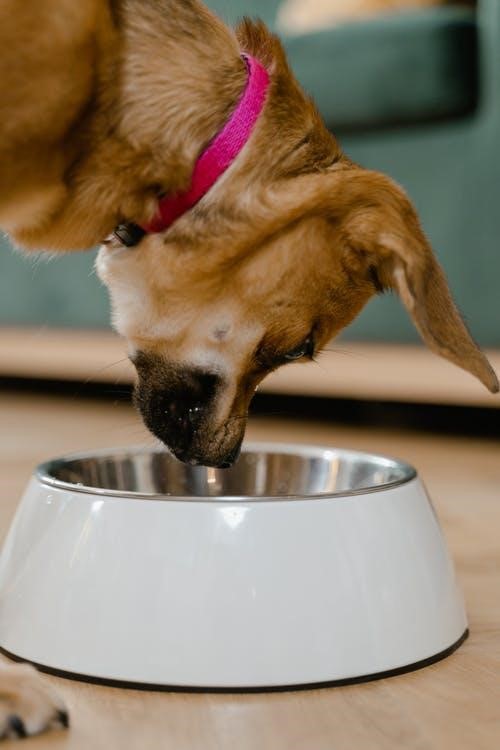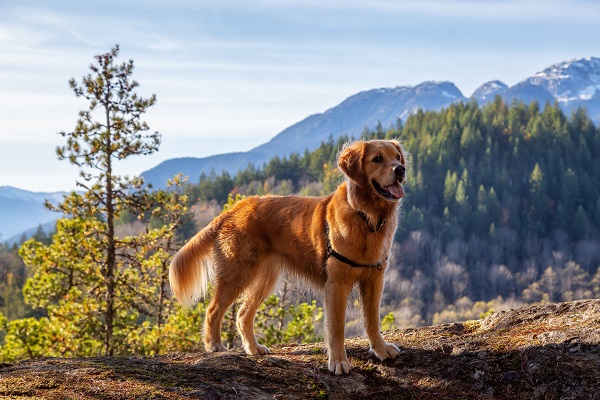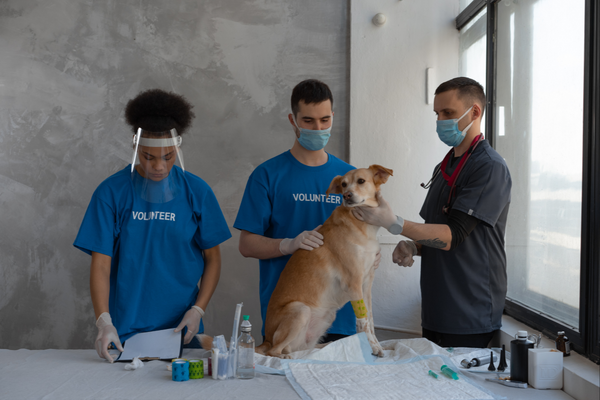A hotly-contested question that has troubled pet parents for a long time is how often you should feed your pet dog. While the answer can be subjective to your dog’s preferences, the general and approved consensus amongst veterinary professionals is that you should feed your dog two times a day.
However, it is not quite as straightforward as that. Depending on whether your dog is a small or a large breed, the quantity of the foods you should feed your pet dog varies.
Moreover, as with humans, you should focus more on the quality of the amount you feed your dog rather than just the quantity.
As you read on, you’ll see that we have answered not only the question of how often you should feed your pet dog and others the ideal feeding practices that you can adopt to ensure that your dog stays healthy and happy!
How Often Should You Feed a Dog?
Feeding Times and Frequency for Your Dog.
The general veterinary opinion is that you should feed your pet dog two times a day – one meal in the morning and one in the evening. But not every pup parent can find the time or convenience to do this. Moreover, not every dog can conform to this schedule.
Therefore, if you feel that the two-meal plan is not ideal for you and your pet dog, you can switch to a program that is easier to remain consistent with.
Having said that, here are two things you will need to consider before you decide on the best feeding schedule for your dog.
Your dog should not be eating immediately before or after his exercise. Doing so substantially increases his risk of experiencing bloating or other digestive complications.
While this differs from dog to dog, eating a well-balanced diet usually translates into needing to poop multiple times. Therefore, depending on how your dog’s digestive system works, you may need to optimize his feeding times to align with your convenience of walking him.
What is a Dog Feeding Schedule?
A dog feeding schedule is a time map that helps you feed your dog at the proper time intervals. Dog feeding schedules are also supposed to support both your dog and you live a happier life.
For your dog, a feeding schedule will help ensure that his meals aren’t too far apart (which can cause acidity) or too close together (which can result in a lack of interest).
For you as a pet parent, a feeding schedule for your dog should help you plan out your day in a way that allows you to give time to feeding them and taking them for walks when they need it.
There are essentially three dog feeding schedules that you can follow.
-
One meal a day
The one-meal-a-day feeding schedule usually requires you to prepare your dog’s meals well in advance and then serve them before you head out for your day. This feeding schedule is a good option if you are the kind of person who does not spend much time at home. Additionally, your dog can eat depending on when he feels hungry.
-
Two meals a day
This feeding plan makes the most sense for anyone working a nine-to-five job outside the home.
It also corresponds to a dog’s natural circadian rhythm. Puppers are crepuscular, which means they would prefer to eat at sunrise and dusk if released into the wild. Giving your dog food in the morning and evening is a terrific approach to accommodate their natural schedule.
However, there can be a scenario where the two-meal-per-day schedule may not be the best option. If you frequently leave work late and cannot provide your dog with a consistent eating schedule, you may be causing your dog worry.
-
Three or more meals a day
In certain circumstances, giving your dog little meals throughout the day is the ideal option.
Puppies, for starters, should eat tiny meals throughout the day; pups under the age of four months should eat four times per day. They can be gradually brought down to three meals daily between four and six months of age. After six months, you’ll be able to choose between one of these meal plans or smaller, more frequent snack-sized meals.
Having said that, multiple small meals can also benefit larger dog breeds. Small meals are recommended for large dogs prone to bloating because they reduce the chance of gas buildup in the digestive system.
What is the Best Time to Feed a Dog?
The best time to feed a dog is once in the morning and once in the evening. The two meals a day feeding schedule is beneficial because it gives your dog enough time between two meals but not too much of it. This helps ensure your dog’s appetite stays healthy and continues to source the nutrition he requires from his regular diet!
However, depending on your schedule and your dog’s preferences, your dog’s feeding schedule might differ. As long as your dog eats a well-balanced diet and you can find the time to meet his physical activity requirements, the best time to feed your dog is likely to differ for different dogs.
How to Train Your Dog to Eat
While most dogs enjoy eating and don’t need specific training, training your dog can ensure that it eats the food it should be eating, even when it’s not something he loves but needs. The rule for training your dog to eat is to serve him fresh food at every meal.
You should give your dog thirty minutes to finish his food. If, after thirty minutes, your dog has not completed his food, you must clear his bowl. Gradually your dog will understand that it should finish its food within the given time.
Dog Feeding: Scheduled vs. Free Feeding
Regarding scheduled mealtimes, the owner delivers food at predetermined times based on the puppy’s or adult dog’s age. Free feeding refers to keeping dog food out all day and letting the dog eat whenever possible.
While free feeding can be a convenient way to ensure that your dog has access to nutritious food throughout the day. This holds especially when you aren’t at home to cater to your hunger, and scheduled feeding has some advantages that free feeding can’t match.
First and foremost, feeding your dog at fixed times every day ensures that your dog gets on an eating schedule. Moreover, there is little to no ambiguity regarding his urinating and pooping needs when he is on a fixed schedule.
Also, free-feeding often results in dogs overeating their food at once or not eating at all. Since many dogs cannot exercise control over what they eat, free-feeding increases the chances of issues like bloating, twisting of their stomach, constipation, or diarrhea.
However, if you schedule the times you put food out for your dog, you can control the amount of food your dog eats in a meal and the fact that you include the foods you should feed your dog in his meals.
How Much Should My Dog Eat?
The amount of food your dog should eat will differ based on size. Larger dogs will need more food than smaller dogs. You must avoid overfeeding your dog. Not only can this result in obesity but also digestive issues such as diarrhea, bloating, etc.
How Much Should Dogs Eat Based on Weight?
The amount a dog should eat will vary depending on its weight. Refer to the chart below to understand how much you should feed your dog to keep him healthy.
Toy Dogs (under 10 pounds)
Up to half a cup
Small Dogs (10-20 pounds)
One to one-and-a-half cups
Medium Dogs (30-50 pounds)
Two cups to two and a half cups
Large Dogs (60-100+ pounds)
About 4 cups
Remember that your veterinary professional will likely tell you the correct amount to feed your dog depending on your dog’s body type, the amount of exercise he gets, and any health conditions he may have.
Therefore, you must consult your vet in case of any doubts regarding how much you should feed your dog.
Is Your Dog Not Eating?
It usually points to an underlying issue, If you commonly find your dog not eating. While it could just be that your dog is not enjoying the food you’re giving it, it could also be something more serious.
Digestive issues, fever, any other form of illness, the physical discomfort of any sort, or a change in its surroundings are common reasons why you face the issue of your dog not eating the food served to him.
Try switching up what you feed him. If your dog doesn’t respond to that change, you should consult your vet to ensure that your dog is not ill or has any medical problem.
Dog Feeding Tips
Here are some dog-feeding tips that you should consider if your dog is a picky eater or if you are trying to be a more conscientious pet parent –
- Keep track of the ingredients used to make the commercially sourced kibble you feed your dog.
- While the charts on food packets that show how much you can provide your dog can give you an estimate, you must talk with your vet to ensure that your dog receives the nutrition he needs.
- Make sure that you ask your dog to work for the food. Even if it is a command as simple as ‘sit,’ you must use it before feeding your dog. This will help increase their attentiveness and engagement with you while also ensuring that they appreciate the food they get.
- While feeding your dog fresh home-cooked food, consult your vet about what ingredients to avoid. Typically these are salt, sugar, most spices, oil, and sometimes, gluten.
- Rotate the foods your dog eats over time to prevent him from getting bored with one type of food.
Foods to Avoid
Chocolate, onion, garlic, salt, spices, sugar, alcohol, and whole fish with bones are some foods you must avoid feeding your dog. You might have to avoid gluten-based foods depending on your dog.
Gluten has been known to cause digestive issues in dogs. And lastly, fruits that have high sugar content should also be avoided. Consuming too much sugar can be fatal for your dog.
Feeding Methods
There are essentially two feeding methods for your dogs –
1) Scheduled feeding method
2) Free feeding method
You should choose a feeding method that ensures convenience and your dog’s nutritional requirements!
Providing Enough Water
The thumb rule for providing enough water to your pet dog is to ensure its bowl is always filled with fresh water. If your dog has not had water in a while and the water is just sitting in its bowl, change it for fresh water.
Doing so will ensure that your dog always has access to water and will drink depending on when it feels thirsty.
Providing Snacks and Treats
The trick to ensuring that you don’t feed your dog excess snacks and treats is to ensure that the treats don’t exceed 10% of the food your dog eats. Ideally, it would be best to use goodies to train your dog.
Overfeeding your dog treats can result in obesity and a lack of appetite for the nutritious food it should be eating.

 DogExpress
DogExpress





















 in Chandigarh, India.
in Chandigarh, India. 
